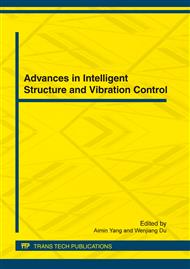p.292
p.297
p.301
p.307
p.313
p.318
p.323
p.327
p.331
Application of SVM in Predicting the Strength of Cement Stabilized Soil
Abstract:
Support Vector Machine is a powerful machine learning technique based on statistical learning theory. This paper investigates the potential of support vector machines based regression approach to model the strength of cement stabilized soil from test dates. Support Vector Machine model is proposed to predict compressive strength of cement stabilized soil. And the effects of selecting kernel function on Support Vector Machine modeling are also analyzed. The results show that the Support Vector Machine is more precise in measuring the strength of cement than traditional methods. The Support Vector Machine method has advantages in its simple structure,excellent capability in studying and good application prospects, also it provide us with a novel method of measuring the strength of cement stabilized soil.
Info:
Periodical:
Pages:
313-317
Citation:
Online since:
March 2012
Authors:
Keywords:
Price:
Сopyright:
© 2012 Trans Tech Publications Ltd. All Rights Reserved
Share:
Citation:


